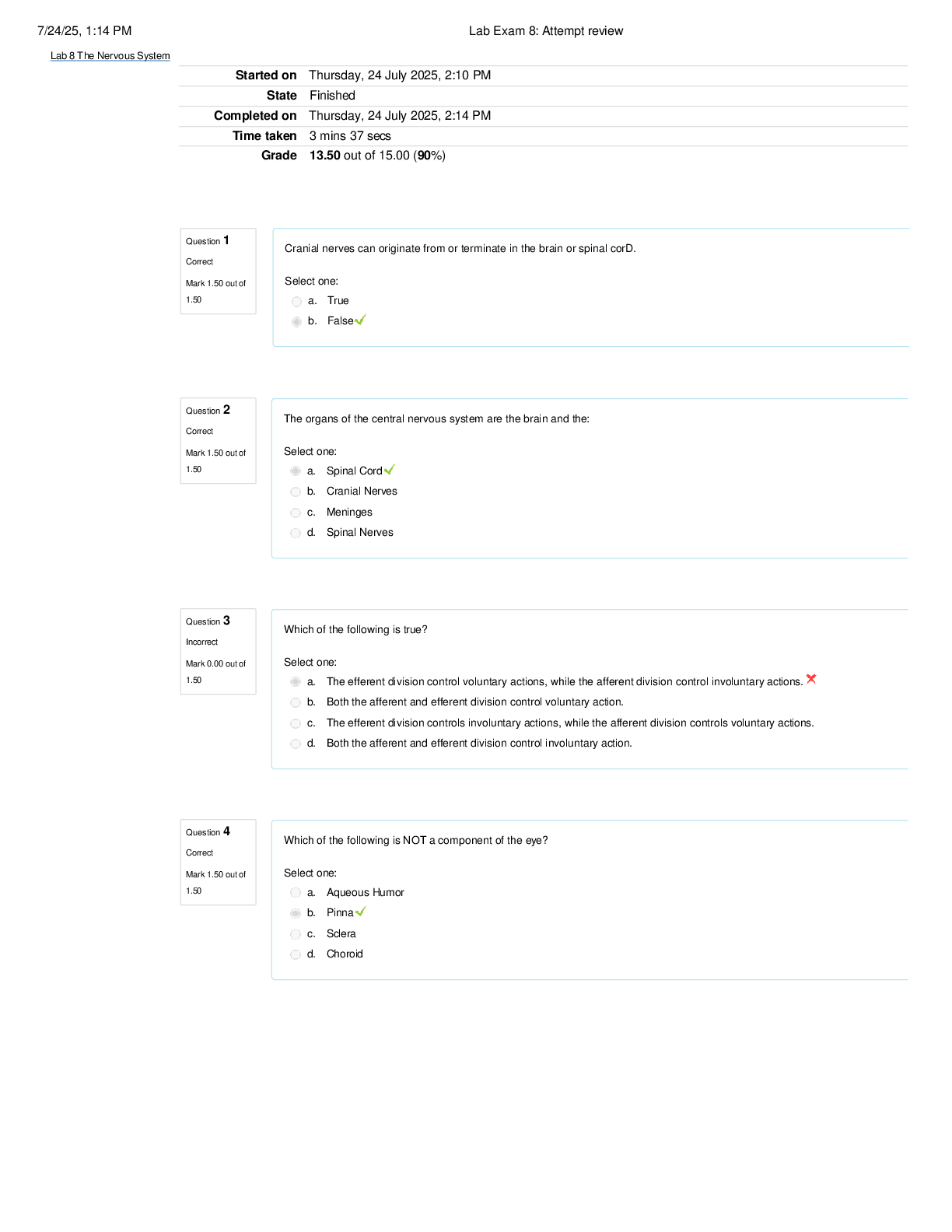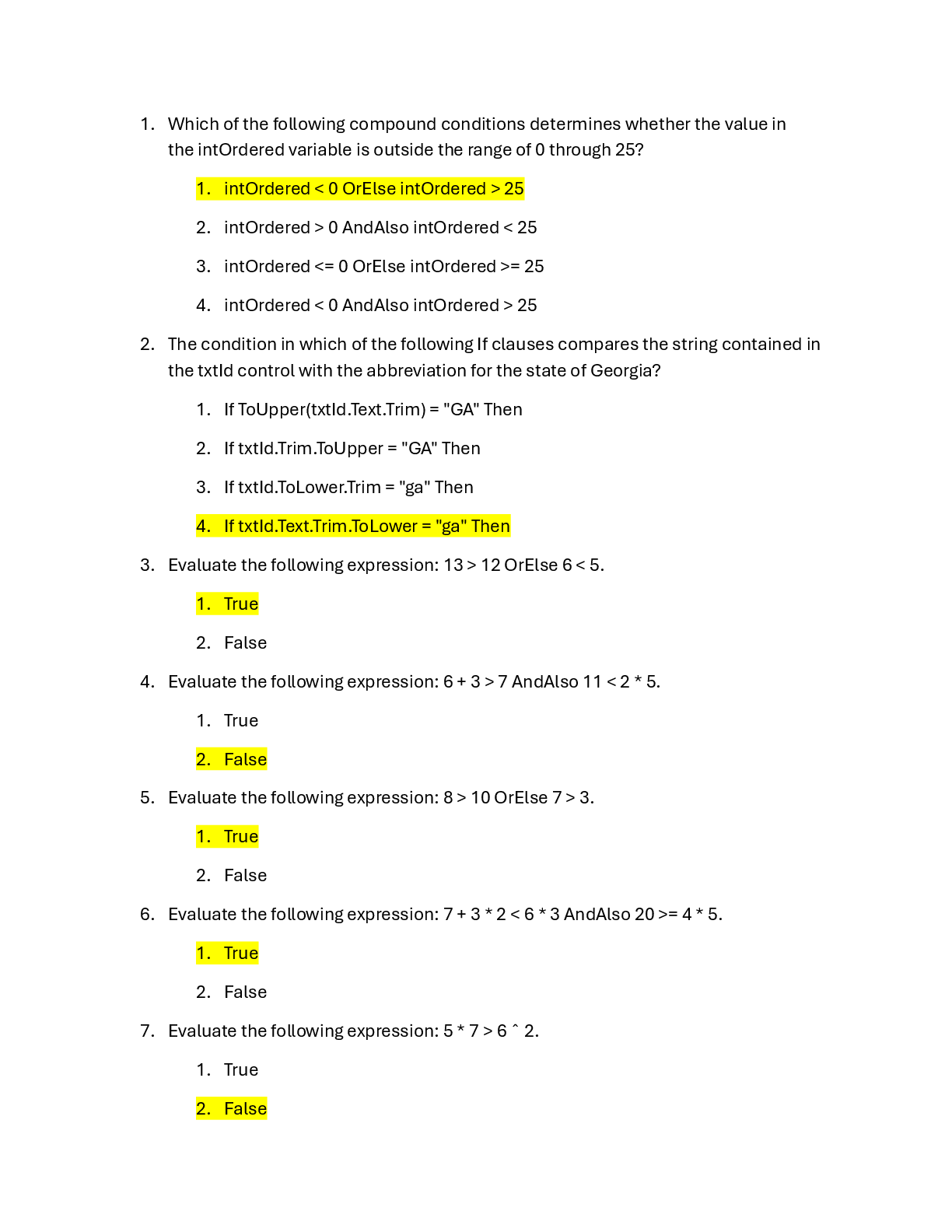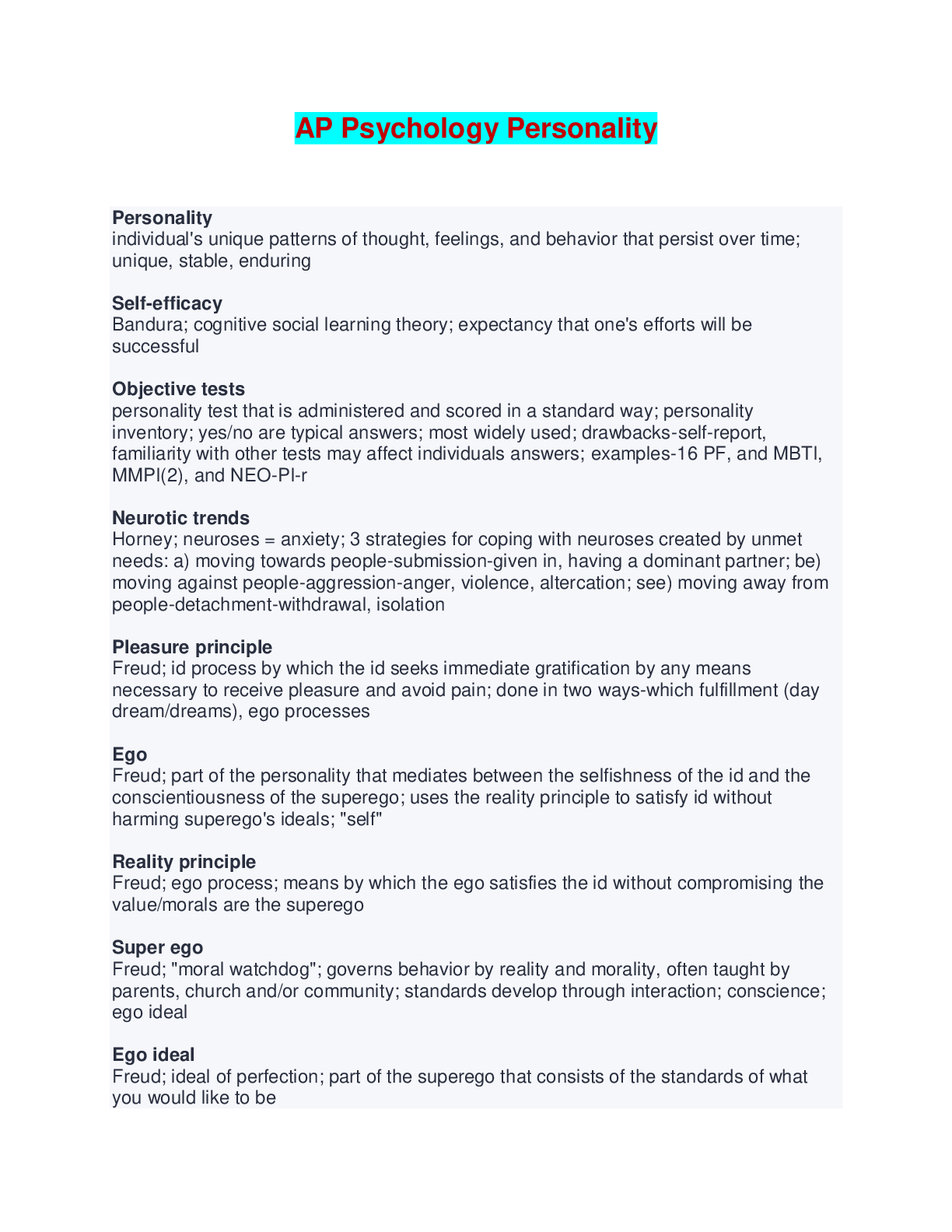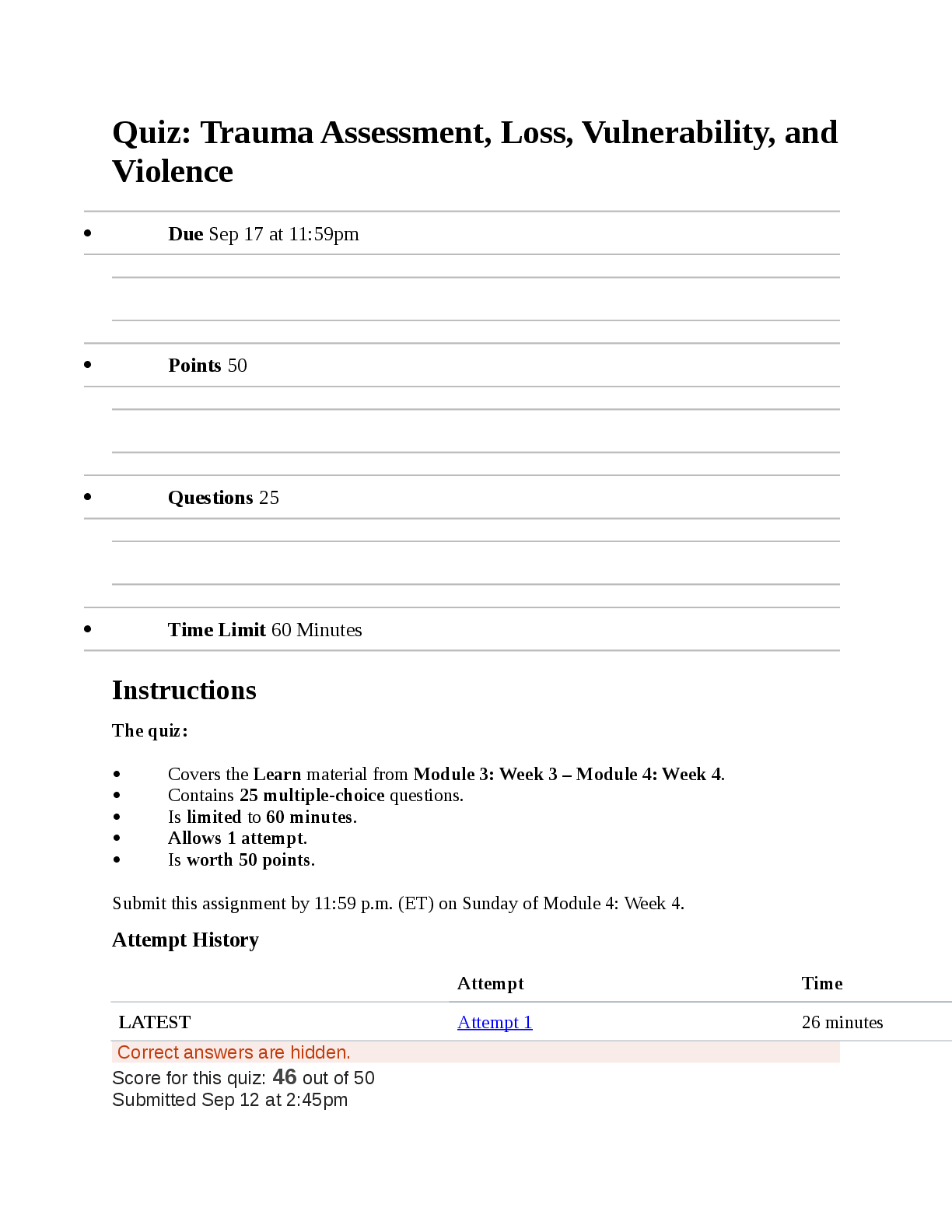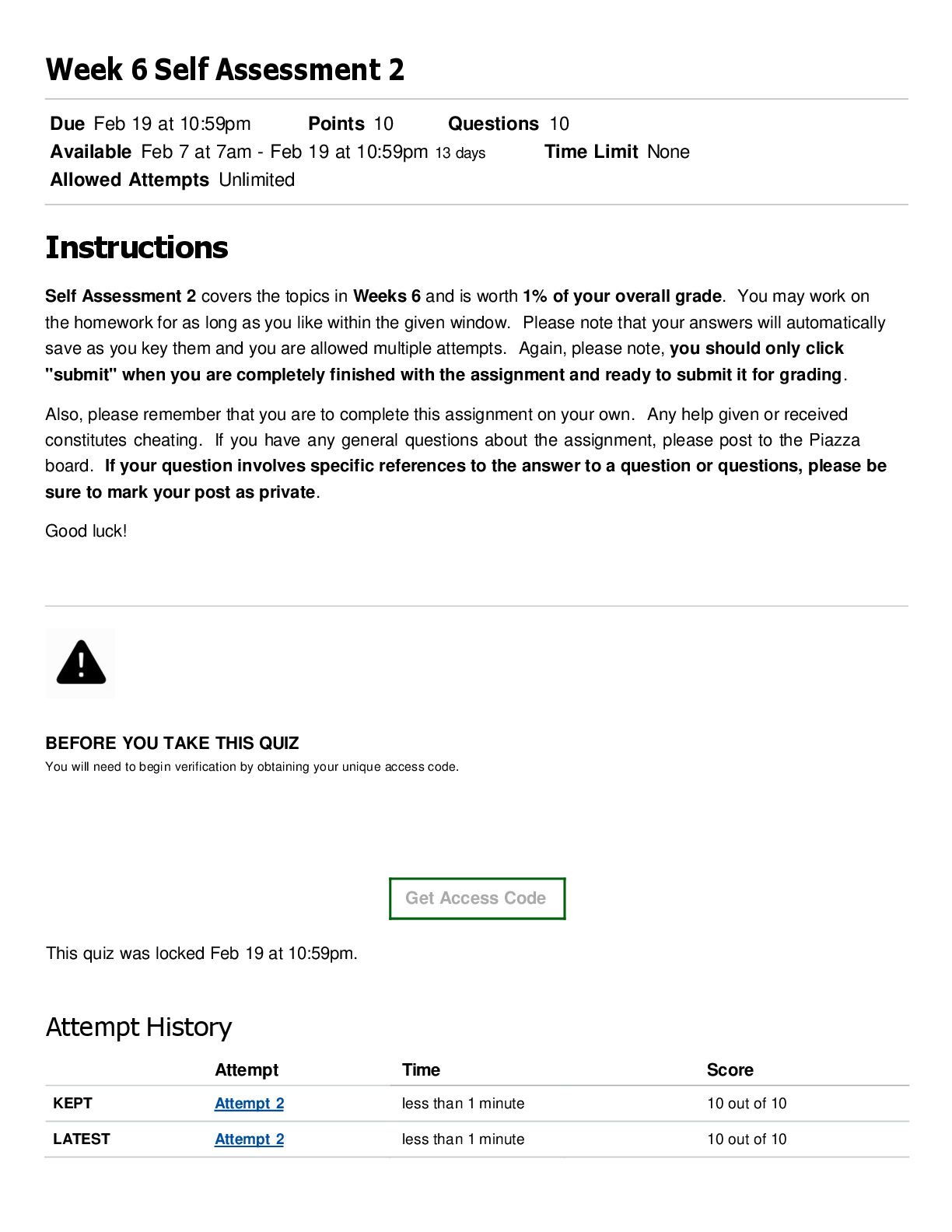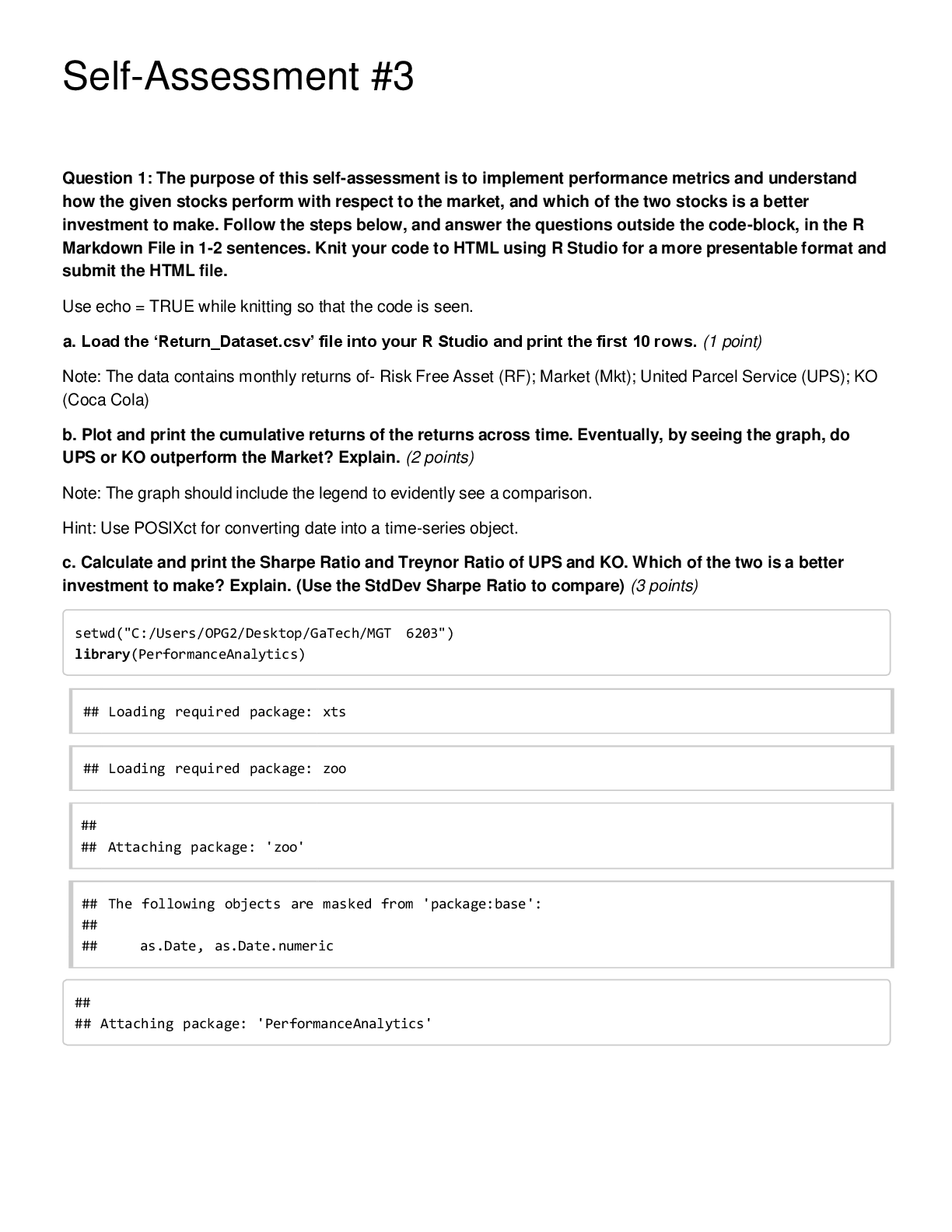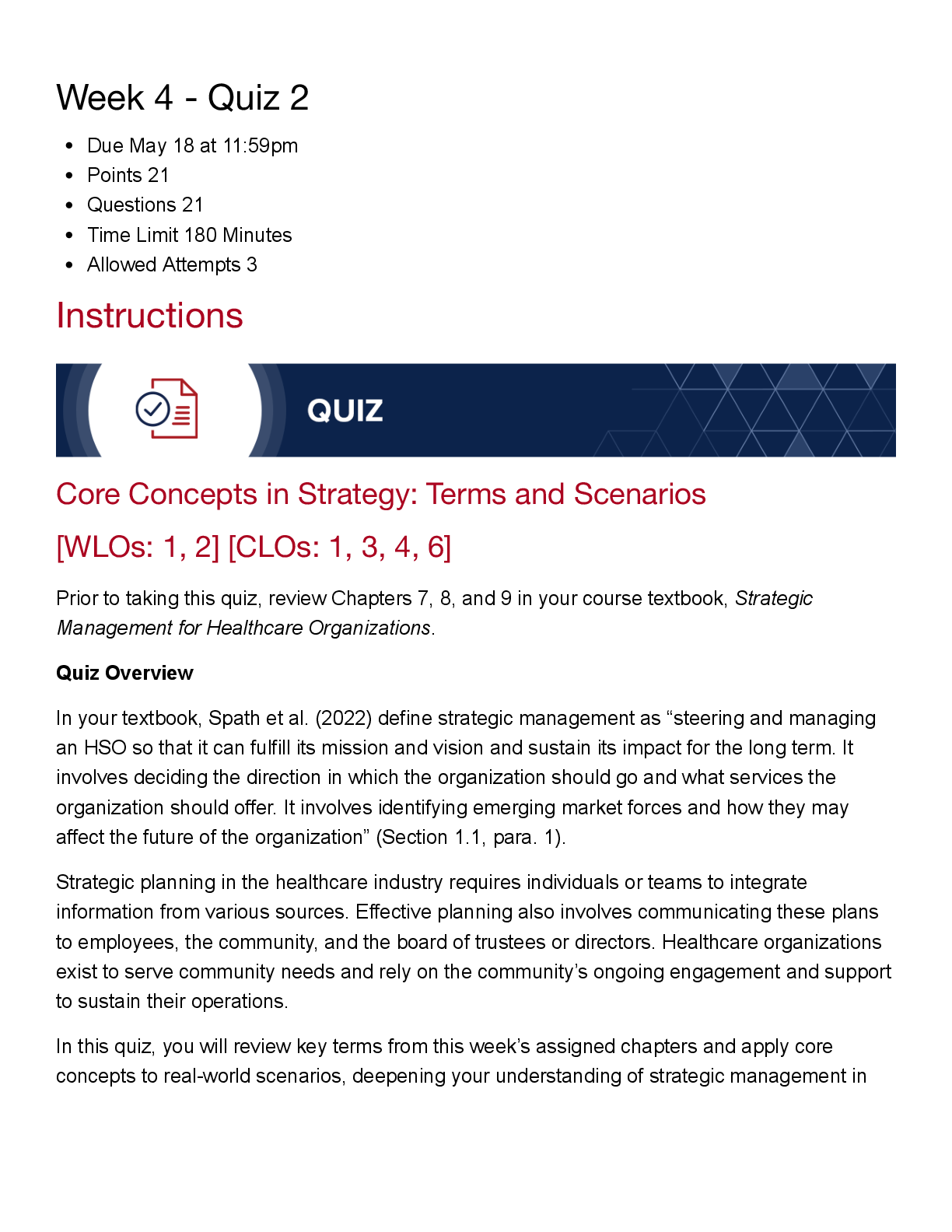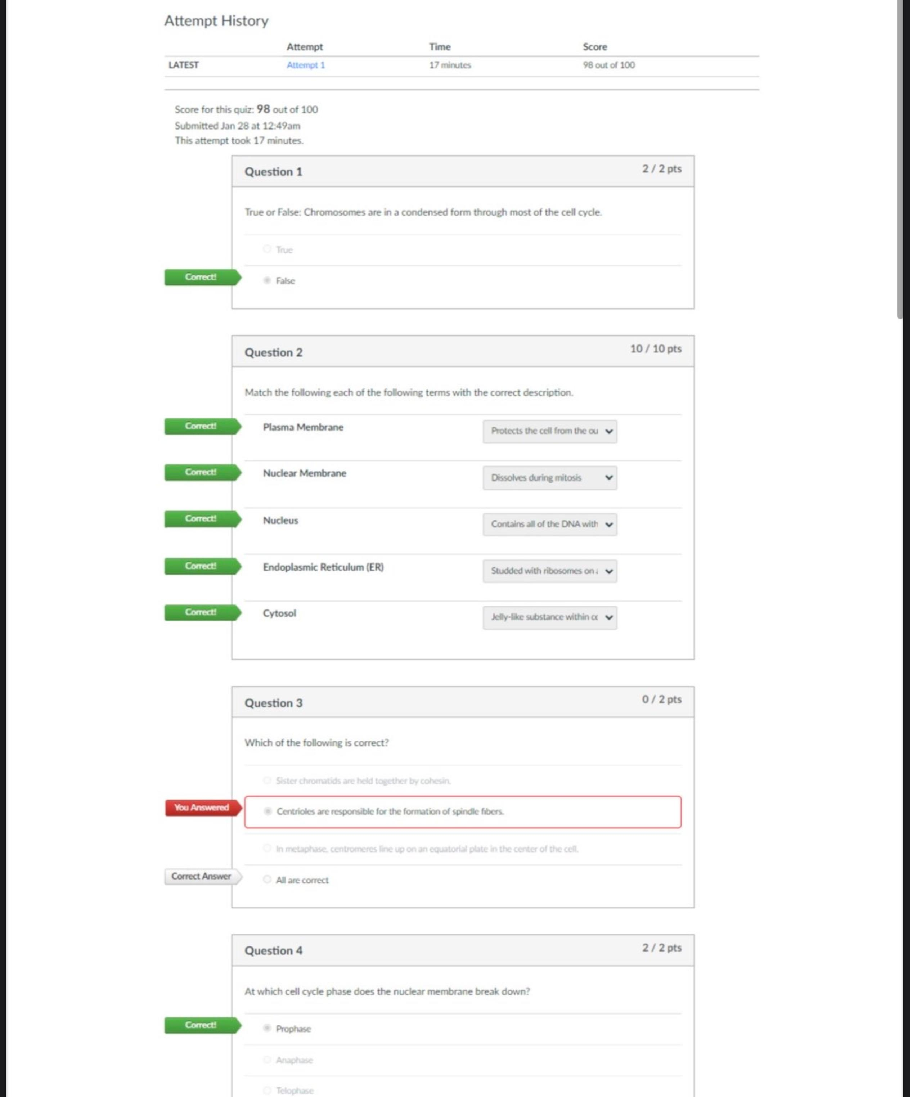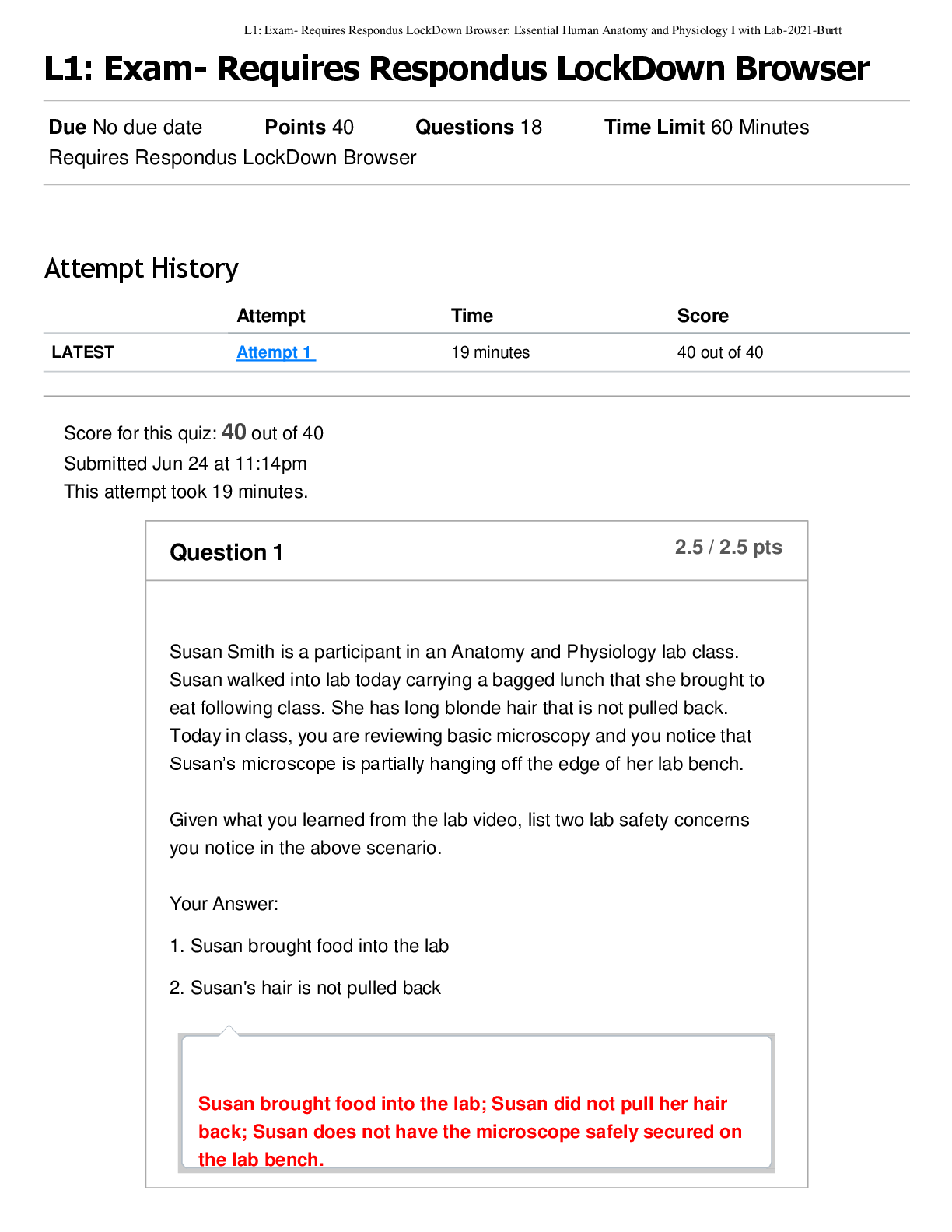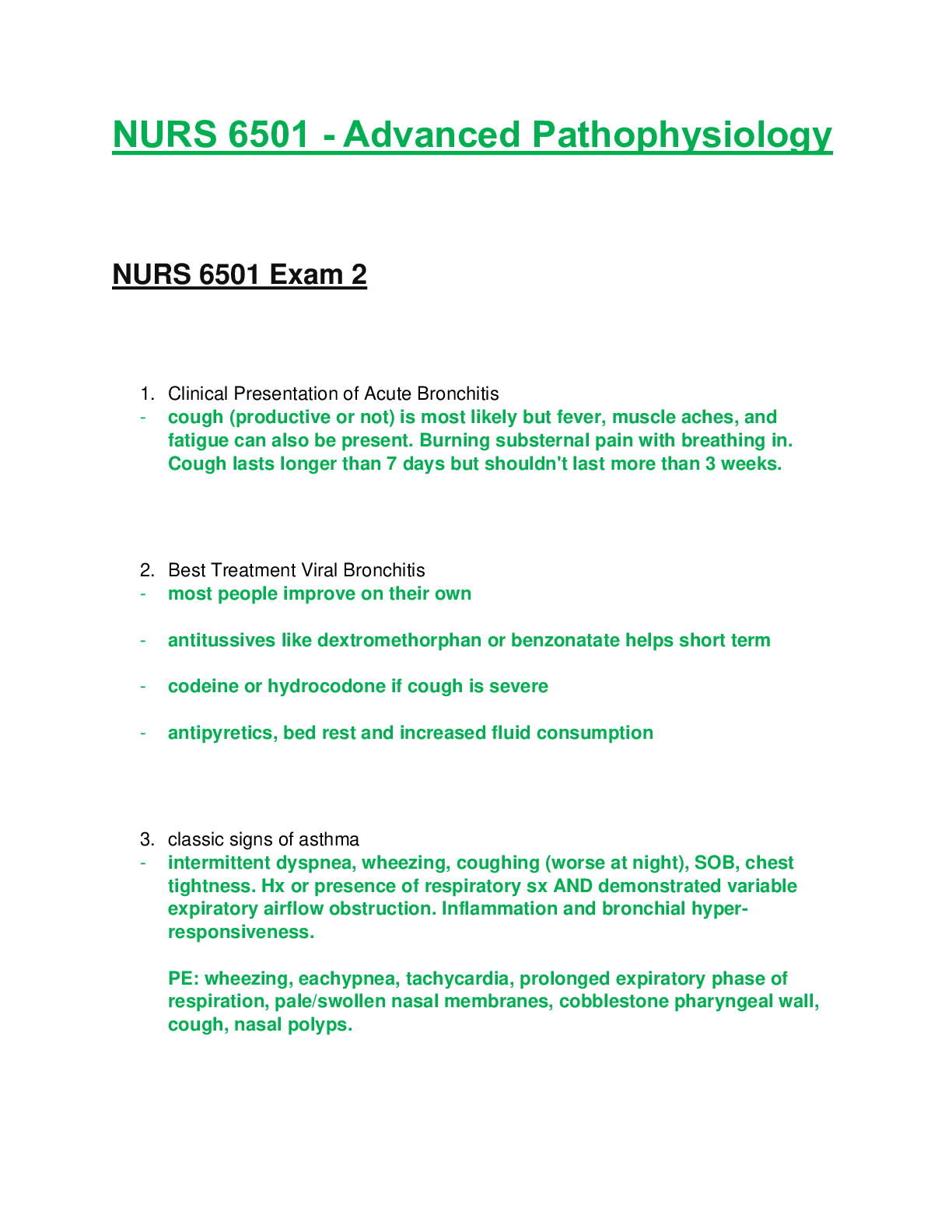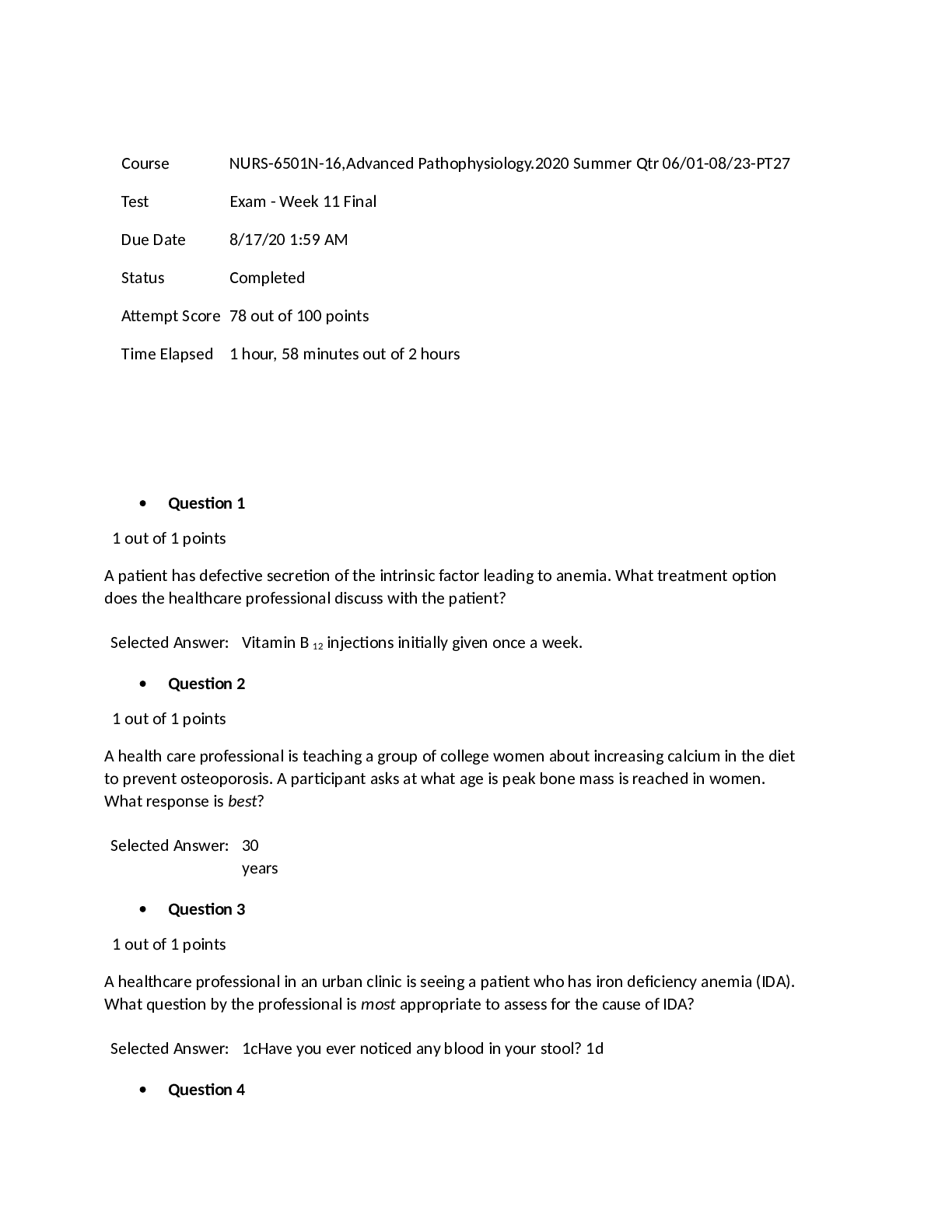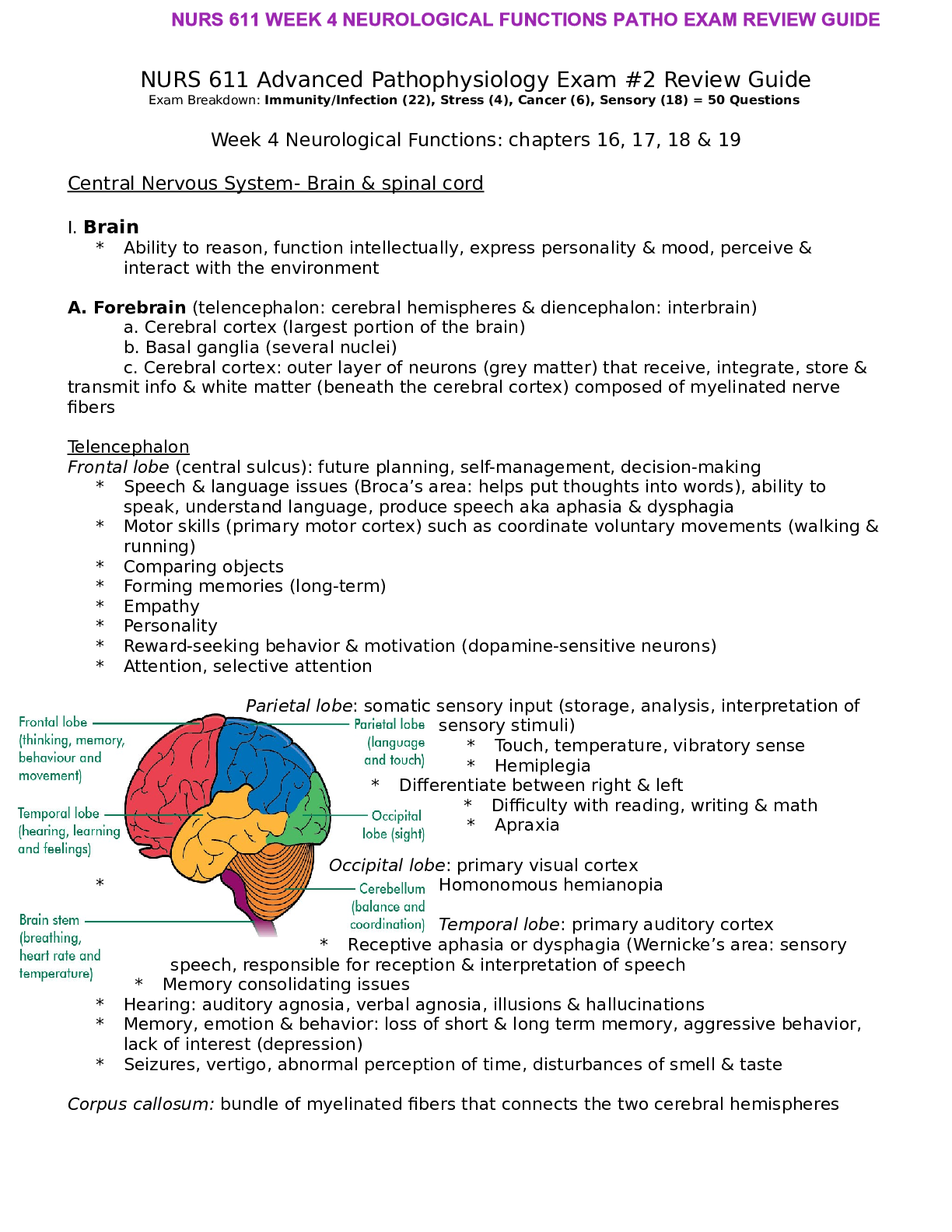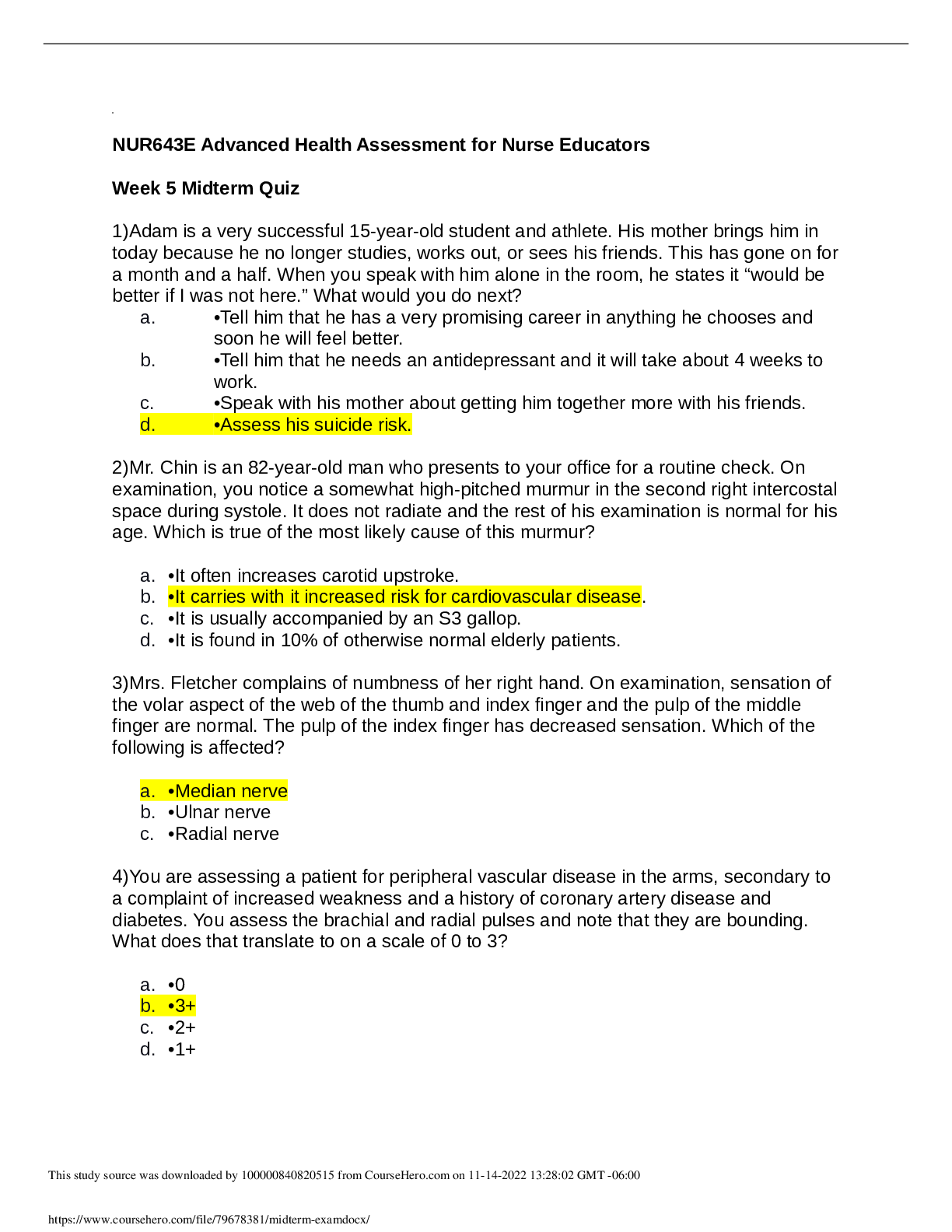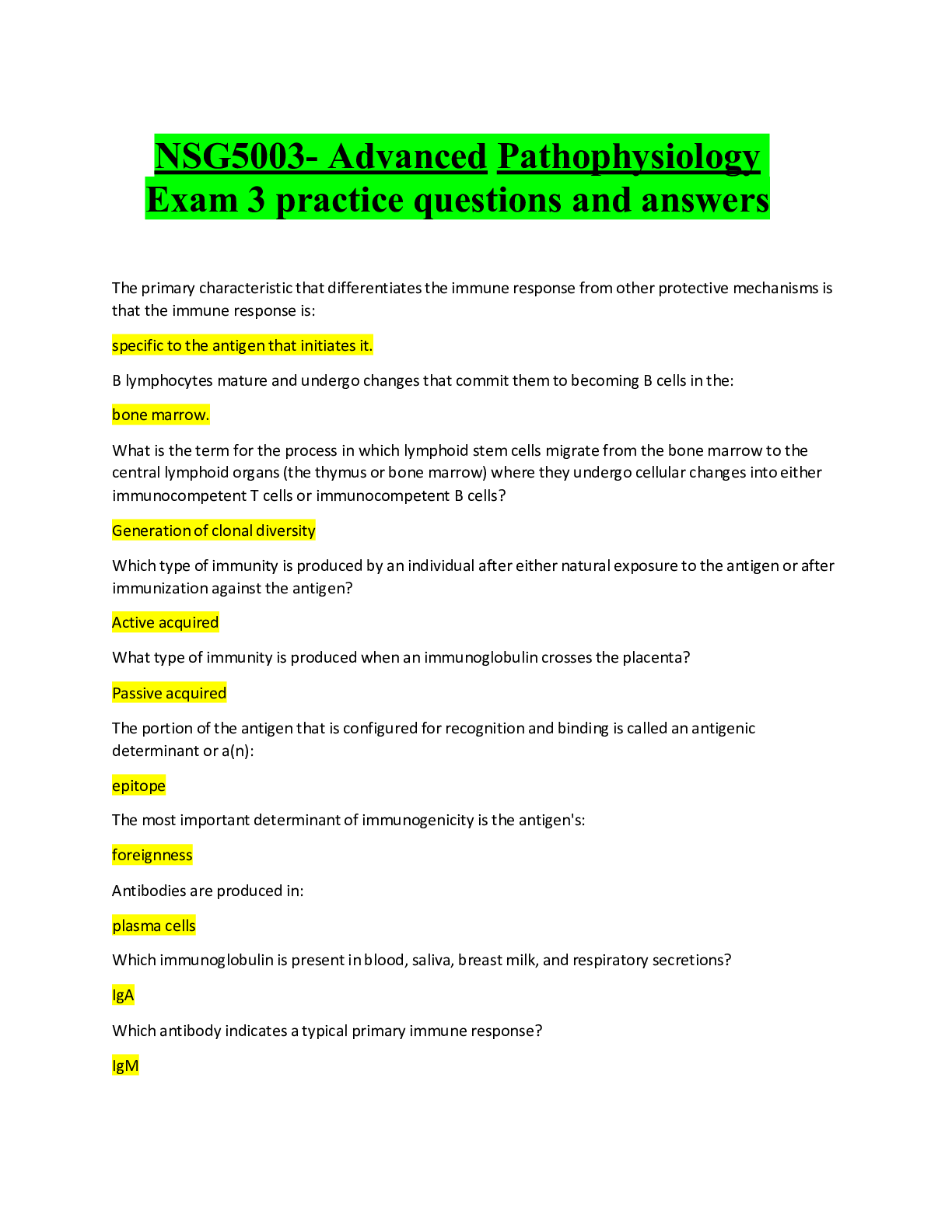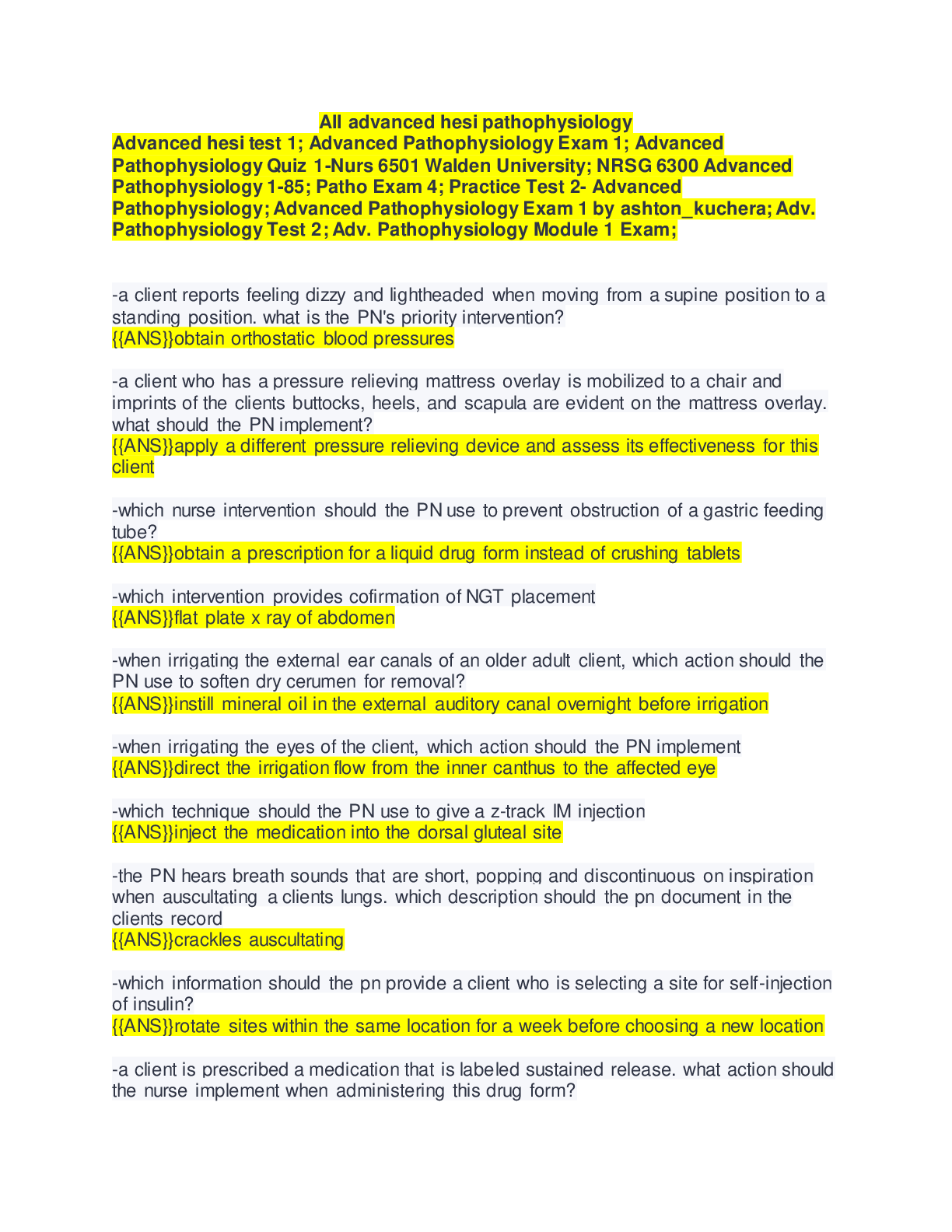NURS 8022 Advanced Pathophysiology Exam #1 Study Guide
Document Content and Description Below
NURS 8022 Advanced Pathophysiology Exam #1 Study Guide Module 1 – Ch: 1-2 Cellular biology, membrane physiology, action potentials, skeletal and smooth muscle contraction, altered cellular tissue, ... and biology of aging Positive and negative feedback – what are they? Understand basics of what they do and how they affect physiology • Negative feedback: promotes stability o Cancels out the original response – original stimulus or response is cancelled out at the end o Body must sense a change and attempt to return to normal - restores homeostasis o Ex: increased blood glucose – body increases insulin production – lowers blood glucose/homeostasis is restored • Positive feedback: promotes a change in one direction; instability; disease o Exaggeration or more of the original response o May be unstable or normal o Normal Ex: oxytocin release during childbirth stimulating labor contractions; platelets and blood clotting cascade Explain the structure of the membrane and the organization of its polar and non-polar components, including lipids and proteins • Membrane structure: phospholipid bilayer o Negative, hydrophobic tails inward; positive, hydrophilic heads outward • Proteins o Provide selectivity to the membrane o Integral: channels, pores, carriers, enzymes, receptors, second messengers – spread through entire membrane o Peripheral: enzymes, intracellular signal mediators • Carbohydrates o Negative charge of carbo chains repels other negative charges o Involved in cell-cell attachments/interactions - often act as receptors o Play a role in immune reactions 2 • Cholesterol – Fat/Lipids o Present in membranes in varying amounts o DECREASES membrane fluidity and permeability (except in plasma membrane) o INCREASES membrane flexibility and stability Cell energy and ATP production basics • Breakdown of carbs into glucose, proteins into amino acids, and fats into fatty acids • Glucose, amino acids, and fatty acids are processed into acetyl-coA • Acetyl-coA reacts with oxygen to produce ATP (aerobic process) o 38 ATP created per molecule of glucose degraded o Only 2 ATP created without oxygen (anaerobic) • ATP is chemical fuel for cellular processes • Adenosine + 3 phosphate groups = ATP o Bonds between 2nd and 3rd phosphates contain abundant energy o ATP converted to ADP produces energy o Mitochondrial enzymes reconvert ADP and liberated phosphate to ATP o 3 R’s: rupture, release, recycle • 3 uses of ATP o Membrane transport, synthesis of chemical compounds, and mechanical work Transport of molecules through the membrane; diffusion and what affects it; facilitated diffusion; active transport; osmosis and what it is • Molecules transported through membrane o Intracellular: K more abundant o Extracellular: Na more abundant • Membrane permeability and ion permeability o High permeability: easily move across membrane ▪ Water, [Show More]
Last updated: 2 years ago
Preview 1 out of 13 pages
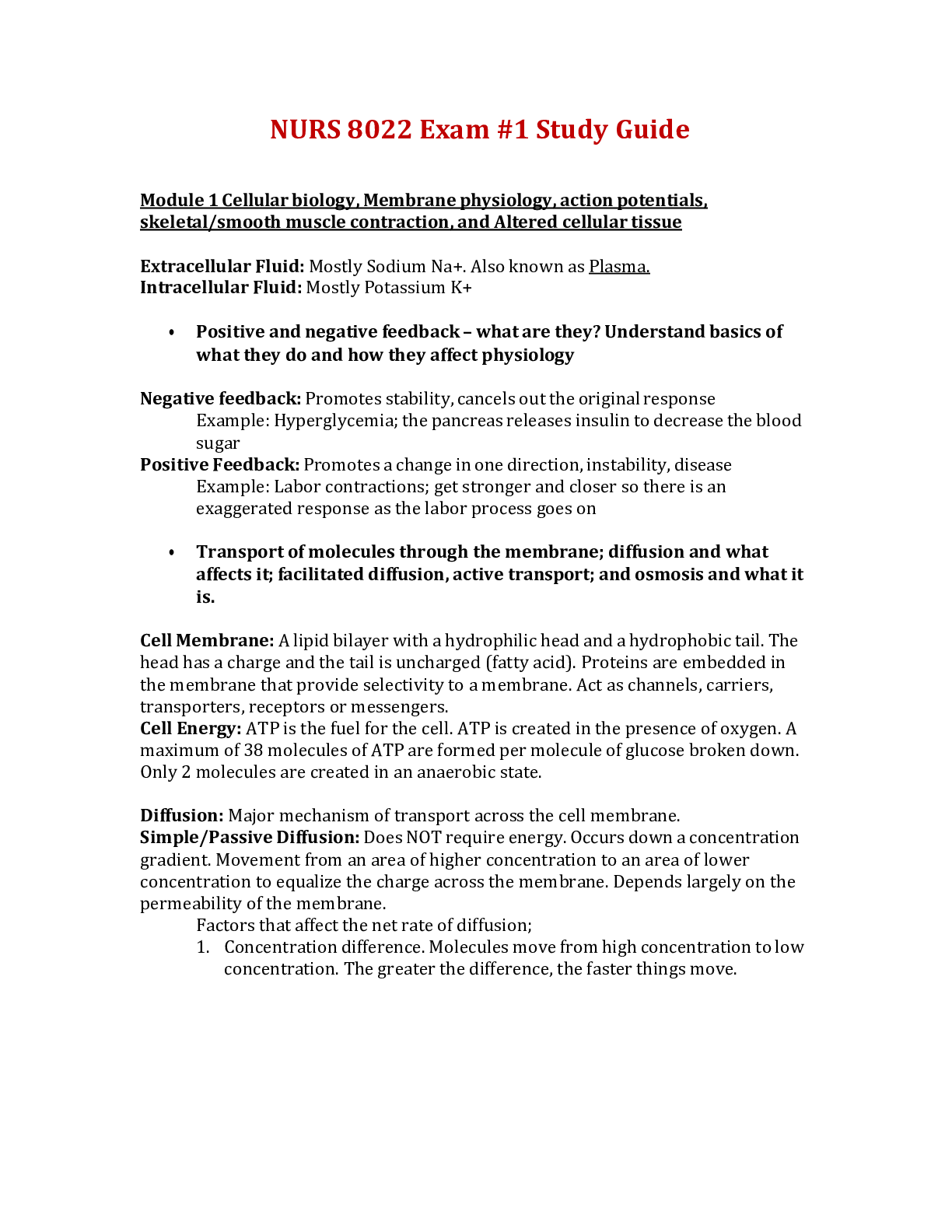
Buy this document to get the full access instantly
Instant Download Access after purchase
Buy NowInstant download
We Accept:

Also available in bundle (1)

NURS 8022 ADVANCED PATHOPHYSIOLOGY EXAM 1-EXAM 4 STUDY GUIDES - UNIVERSITY OF CINCINNATI
NURS 8022 ADVANCED PATHOPHYSIOLOGY EXAM 1-EXAM 4 STUDY GUIDES BUNDLE
By Nurse Henny 2 years ago
$30
4
Reviews( 0 )
$15.00
Can't find what you want? Try our AI powered Search
Document information
Connected school, study & course
About the document
Uploaded On
Jun 29, 2023
Number of pages
13
Written in
Additional information
This document has been written for:
Uploaded
Jun 29, 2023
Downloads
0
Views
127

